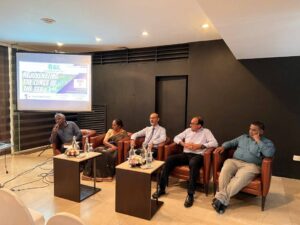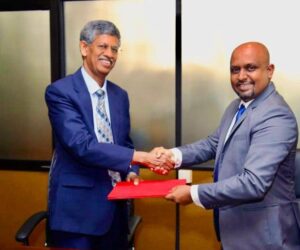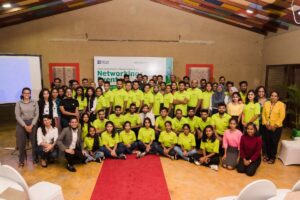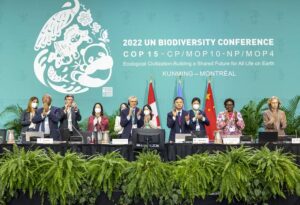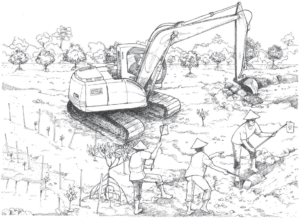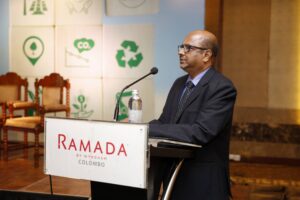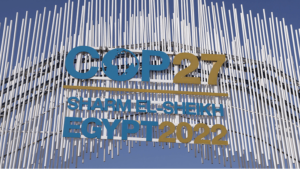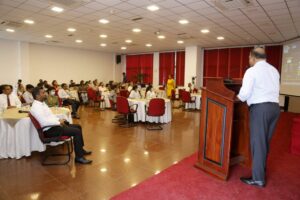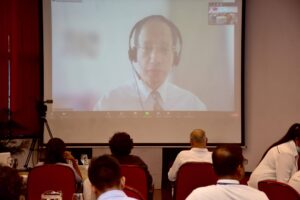Following multiple setbacks caused by the COVID 19 outbreak, BSL planned a field visit to the LIFE project site with the help of IUCN. LIFE is a groundbreaking public-private effort in Halgahawala, Opatha, within the Kanneliya Forest Reserve to restore a degraded fern land. The visit was arranged to demonstrate progress and the most significant milestones achieved during the years of implementation. The project has just completed its fourth year.
LIFE aims to pilot test the feasibility of restoring a completely degraded rainforest patch within the Kanneliya Conservation Forest in Southern Sri Lanka. The site has been cleared for cultivation and subsequently abandoned, resulting in its colonization by the pioneer fern species Dicranopterus linearis (Kekilla). In the past, the Forest Department has tried to restore this site by planting Eucalyptus trees which has not been successful. Thus, LIFE has undertaken to restore a 10-ha extent of this degraded forest patch, using principles of restoration ecology, to enhance its ecological functions, habitat quality, species diversity, and capacity to provide biodiversity and ecosystem services that are in close approximation to what prevailed there, before it was converted to its present state.
During the visit IUCN technical staff explained about the overall progress. Since the initiation of ground-level activities of the project in April 2018, several key achievements have been reached, regardless of the challenges posed by rugged terrain, poor access to the site, erratic climate patterns, and most recently the COVID-19 pandemic. The completed activities include ground preparation, fencing of the site, planting, and the systematic collection of information for the development of the Biodiversity Credit Accrual Scheme (BCAS). To protect the new plants from herbivores roaming the area, a fence of 1,400m in length was established encircling the entire project site. Concrete posts of 5’ height and barbed wire were used for this purpose. In addition, expansion of the intensive restoration area beyond that accomplished during the third year, application of organic fertilizer, planting of shade plants and forest plants, maintaining the fence, nursery management, watering and protecting plants from herbivores were carried out during the reporting period.
A nursery was established on-site, to maintain the seedlings until they are planted. To avoid plants from catching (forest) fire in the dry season, a 6’ wide fire belt was established by removing the Kekilla. Shade plants namely Glyricidia sp., Erythrina sp. “Kenda” and native species including “Hora”, “Goraka”, “Kata Kaela”, “Wal Del” and “Nawanda”, were also planted. The plants were obtained from local communities and the Forest Department. The plant nursery established by the project currently maintains more than 3,500 plants. Plants are transferred to the field on a regular basis. Hence, the nursery is being continuously improved to ensure an un-interrupted source of seedlings for planting. Seeds and seedlings are collected from the adjacent forest area for gap filling, potted in bags, and raised in the nursery until they are ready to be transferred to the field.
Field staff also explained about a significant method of application fertilizer, soil conservation and improvement methods and dry season watering.
Soil tests conducted by the Soil Science Department of the University of Peradeniya confirmed the highly degraded status and poor nutritional condition of the soil at the restoration site. As such, as per initial recommendations received, the application of fertilizers was initiated. Compost, organic pellet fertilizer, inorganic fertilizer, and dolomite were used systematically and carefully due to the sensitive nature of the site. Phosphate and nitrate tests were conducted with samples taken from the site and from an adjacent location. The tests revealed zero impact of the application of inorganic fertilizers to the forest and stream ecosystems of the area.
Soil plays a critical role in forest restoration as poor-soil suppresses plant growth. Due to heavy soil erosion and subsequent invasion of Kekilla, together with forest fires, have caused the soil condition in the site to been very poor. During the reporting period, several actions such as the introduction of live fences, soil conservation bunds, and barriers, the introduction of legume species, were carried out to improve the soil condition.
A watering system was established to ensure a continuous supply of water to plants during the dry season. Clay pitchers are placed next to selected plants located in the dry, hilly areas of the site to ensure water availability to plants during dry times. Also, a layer of coir or coconut husks were added to the planting pits, to retain moisture conditions for a longer period of time.
Representatives from partnering companies expressed their appreciation for the progress made over the last few years. Among them it was Senal Siriwardene from Jetwing who said “over the past years we see marked differences with the efforts put in here that have made a massive difference to the environment and lot of the native vegetation are being put in, pushing the fern cover back. It’s a winning moment for us and all involved in this project”.
Arrangements are being made to sustain the site with the involvement of the project partners, after the fifth and final year of this phase.




